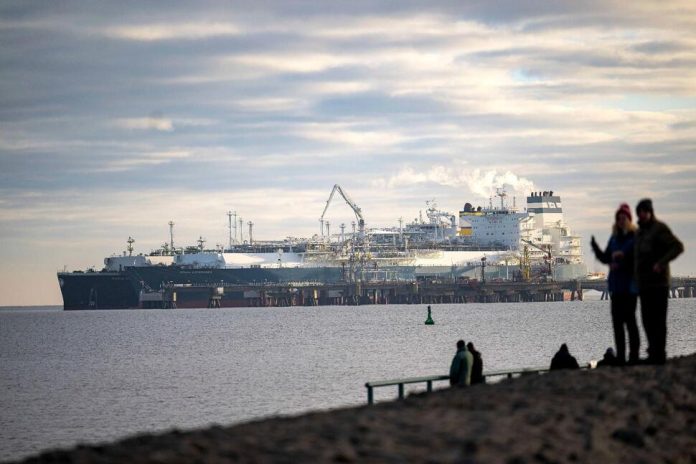Missiles and drones are seen flying in the Red Sea, disrupting one of the world’s key energy supply routes to Europe, AP News reports.
Attacks by Yemen’s Houthis due to the Israel-Hamas war pose a new threat to the future of energy supplies to the European Union, which relies on imported natural gas for factories, power generation and home heating. Tankers carrying supercooled liquefied natural gas (LNG) for transport by sea regularly pass through the Red Sea.
However, several shipments to Italy have already been cancelled. About 70% of LNG shipments from Qatar bound for Italy’s main terminal on the Adriatic Sea were cancelled in January. Qatar supplied 40 per cent of Italy’s LNG last year.
Iranian-backed Houthis have been firing drones and missiles at ships passing by their controlled territory near the narrow Bab al-Mandab Strait in the southern Red Sea.
The Houthis claim they are targeting ships bound for Israel to support the militant group Hamas in its war against Israel, although other ships have also been targeted. In response, the US and the UK have been attacking Houthi bases in Yemen since mid-January.
Security concerns have forced shipping and some energy companies to divert ships through the Cape of Good Hope in southern Africa rather than via the Suez Canal. As a result, the journey to Europe from Middle Eastern suppliers, such as Qatar, is extended by a week or more, with costs rising significantly.
Cooling natural gas to minus 162°C (minus 260°F) turns it into a liquid and reduces its volume by 600 times, so it can be stored and transported on specially constructed ships. Upon arrival, it is reheated into a gas and transported through pipelines to distribution companies, industrial users and power plants.
Europe has relied on gas transported through pipelines from Russia for decades, but everything changed when war broke out in Ukraine in February 2022. Russia cut off most of its supplies, and LNG became Europe’s lifeline. For example, Germany has built floating import terminals on the north coast.
Last year, 12.9 per cent of European LNG passed through the Red Sea from Middle Eastern suppliers, mostly from Qatar. This means that “an extended shut-in of the Red Sea route from the Middle East poses a supply risk to Europe,” Kaushal Ramesh, vice president at Rystad Energy, says.
Natural gas spot prices have fallen since the Houthi attacks began, from about 45 euros ($48.38) per megawatt hour before the Israel-Hamas war began to 28.37 euros on Tuesday. Meanwhile, pipeline gas still comes from Norway and Azerbaijan, and Europe is buying some LNG from Russia despite the sanctions.
Concerns are raised that the war could spread across other countries in the region, especially Iran, and disrupt shipping through the Strait of Hormuz at the end of the Persian Gulf. This is a key route not only for LNG, but also for oil.
Europe is also debating whether to invest more money in fossil fuel infrastructure, which aims to reduce greenhouse gas emissions by 55 per cent from 1990 levels by 2030.
Gas demand in Europe is expected to fall by 8 per cent between 2022 and 2026 as renewable energy sources such as solar and wind expand. Claudia Kemfert, an economic expert at the German Institute of Economic Research and professor at Leuphana University, stated:
Expanding LNG infrastructure in the USA and in the EU is a high economic risk that will very likely end up as stranded assets.
